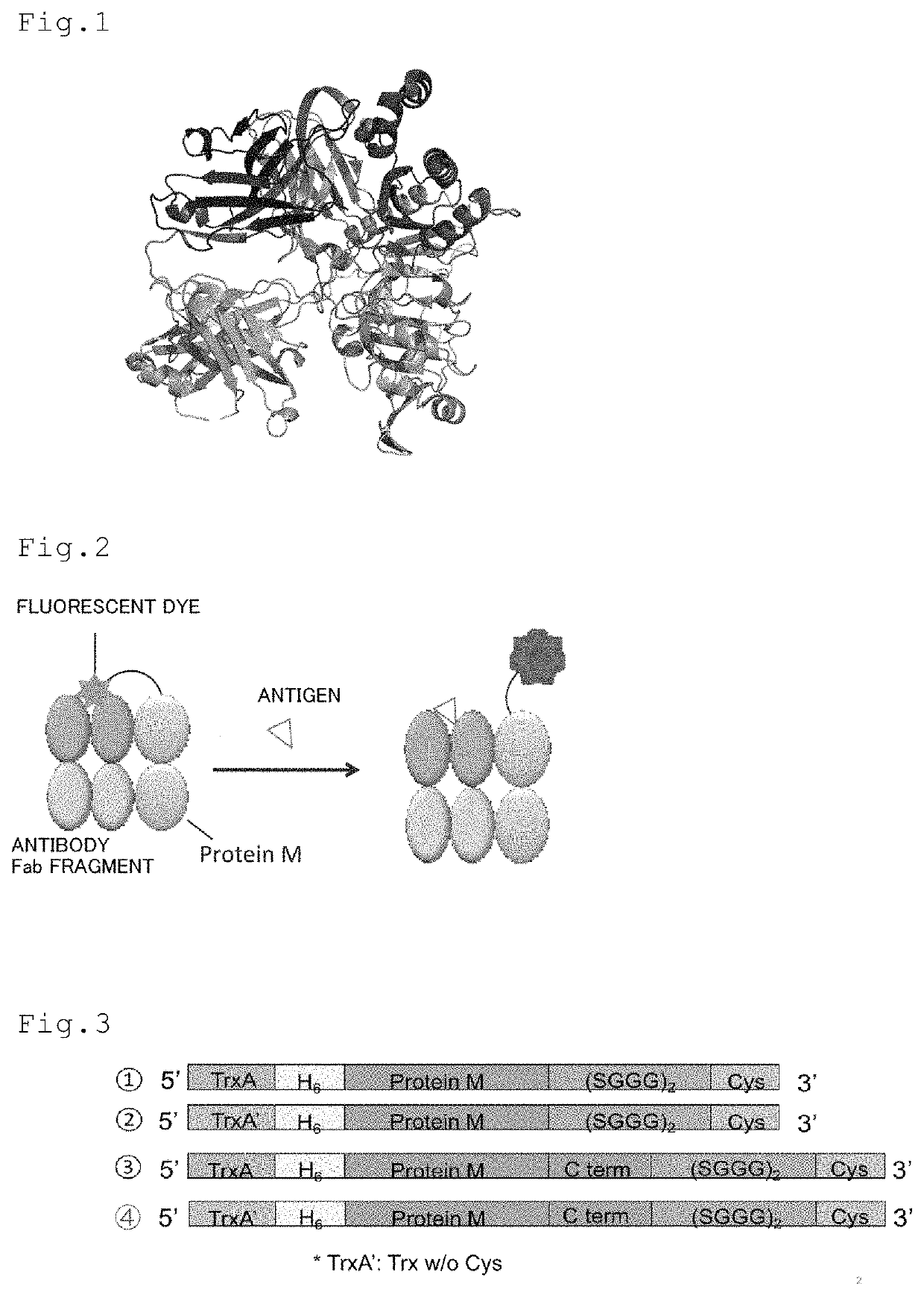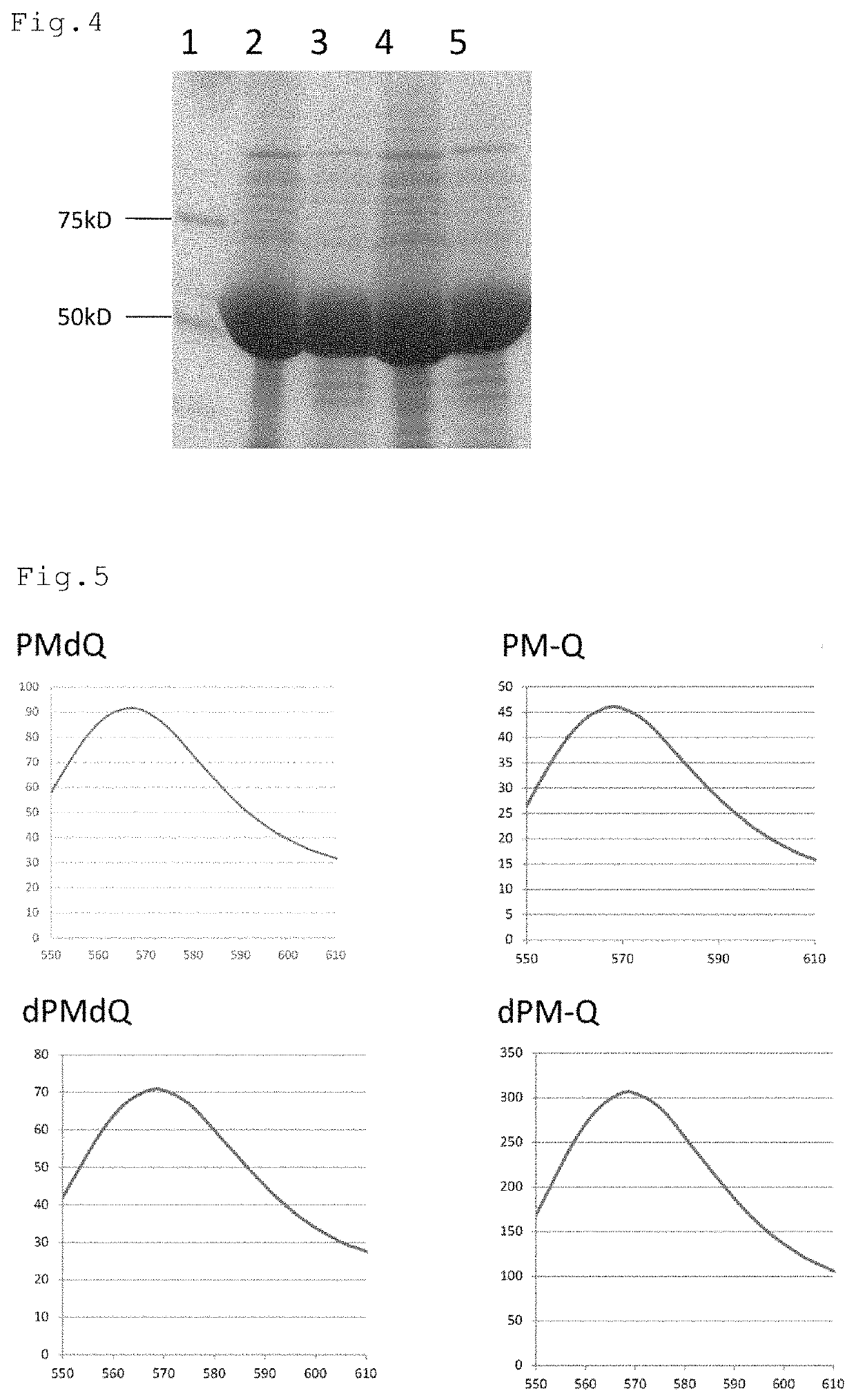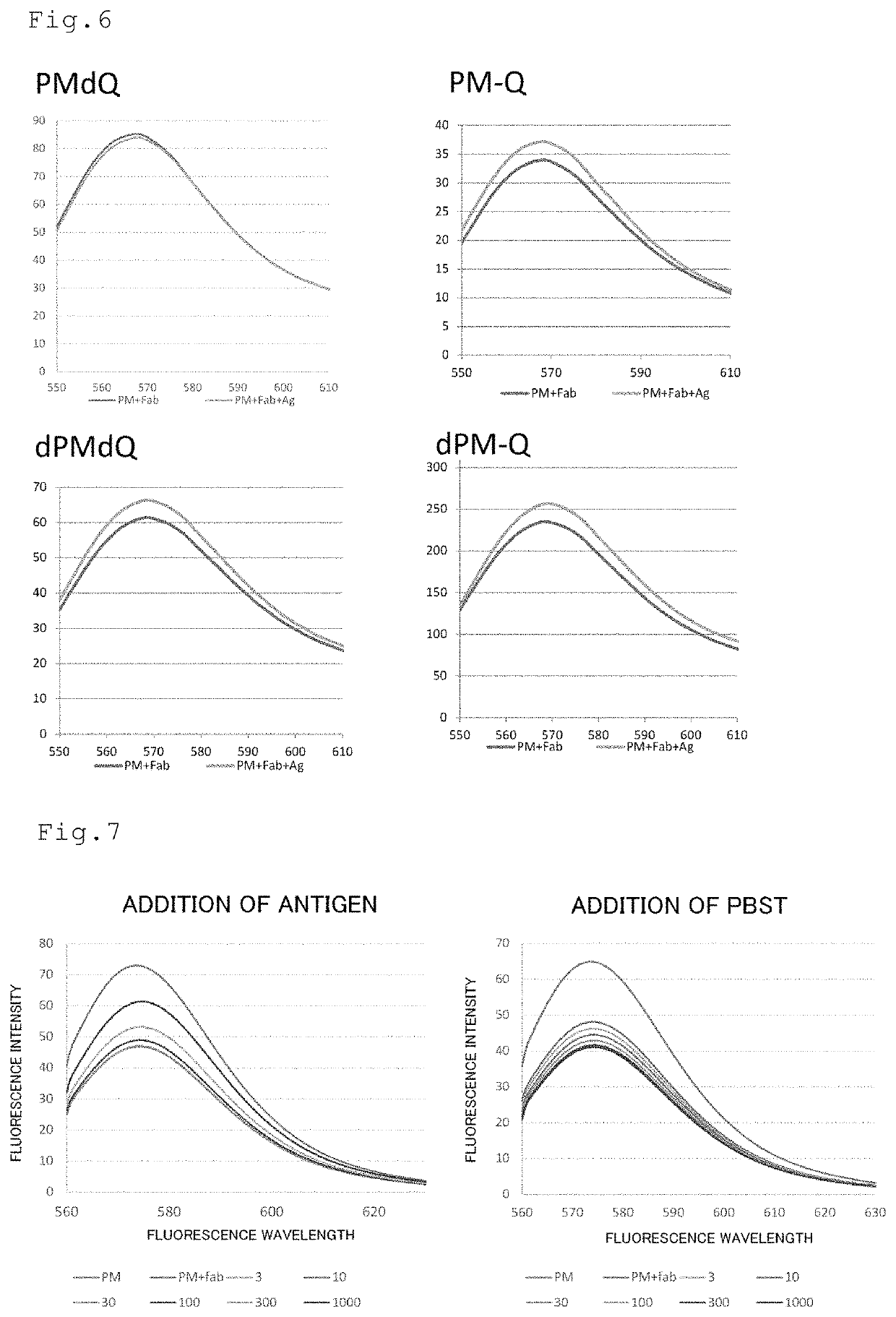Kit for detecting antigen or measuring its amount
a technology for detecting antigens and kits, applied in the field of kits for detecting antigens or measuring their amount, can solve the problems of taking time and cost for construction, labor and time of several hours in measurement, etc., and achieve the effect of high sensitivity
- Summary
- Abstract
- Description
- Claims
- Application Information
AI Technical Summary
Benefits of technology
Problems solved by technology
Method used
Image
Examples
example 1
[Example 1] Construction of PM-Q Probe Expression Vector
[0074]In all experiments, water purified with Milli-Q (Merck Millipore) and sterilized in an autoclave was used. Hereinafter, the water is referred to as sterile water. The common reagents used were those of Sigma, Nacalai Tesque, Inc., FUJIFILM Wako Pure Chemical Corp., or Kanto Chemical Co., Ltd. unless otherwise specified.
[0075]A gene sequence (SEQ ID NO: 2) encoding the residues 78-468 of protein M (FIG. 1) was synthesized (Eurofin Genomics). In order to insert this sequence into an expression vector pET32a (Novagen), the synthesized sequence and the expression vector were each cleaved by restriction enzymes NcoI and NotI, followed by ligation, transformation, and ampicillin medium selection in accordance with ordinary methods. The resulting colony was cultured, and plasmids were extracted to select a plasmid including the inserted sequence.
[0076]Subsequently, in order to insert a tag sequence including a cysteine (Cys) res...
example 2
[Example 2] Removal of Cys Residue from Thioredoxin in PM-Q Probe Expression Vector
[0077]The pET32 was designed to express a protein in a form fused with thioredoxin at the N-terminus (hereinafter Trx) in order to improve the solubility of the protein. However, since Trx contains two Cys residues, which have a possibility of being modified by a fluorescent dye, near to each other (residues 33 and 36), these residues were substituted with serine (Ser). Mutation was performed using primers TrxMutCS2-top (5′-GGGCAGAGTGGTCCGGACCGTCCAAAATGATCGCC-3′, SEQ ID NO: 7) and TrxMutCS2-bottom (5′-GGCGATCATTTTGGACGGTCCGGACCACTCTGCCC-3′, SEQ ID NO: 8) by a QuikChange mutagenesis kit (Stratagene, Agilent Technologies, Inc.), and the sequence was verified using a T7 promoter primer (5′-TAATACGACTCACTATAGGG-3′, SEQ ID NO: 9). This procedure was performed for pET32-PMdQ and pET32-PM-Q to obtain pET32d-PMdQ and pET32d-PM-Q.
example 3
[Example 3] Expression and Purification of Fusion Protein
[0078]E. coli SHuffle T7 lysY was transformed using pET32-PMdQ, pET32-PM-Q, pET32dC-PMdQ, and pET32dC-PM-Q. Subsequently, the E. coli carrying a plasmid was cultured in 100 mL of an LBA medium (10 g / L triptone, 5 g / L yeast, 5 g / L NaCl, and 100 μg / mL ampicillin) at 30° C. until the OD600 became 0.6, and IPTG was then added thereto to 0.4 mM, followed by incubation at 16° C. for further 16 hours. The cells were collected by centrifugation. E. coli cells suspended in 10 mL of an extraction buffer (50 mM sodium phosphate, 300 mM sodium chloride, pH 7.0) were disrupted with a cell crushing apparatus (One Shot Disruptor, Constant Systems Ltd.), followed by centrifugation at 1000×g for 20 minutes. The supernatant was collected and was purified by immobilized metal affinity chromatography. Specifically, an appropriate amount of TALON (Clontech Laboratories, Inc.; Takara Bio Inc.) agarose gel was added to the supernatant, followed by s...
PUM
| Property | Measurement | Unit |
|---|---|---|
| temperature | aaaaa | aaaaa |
| temperature | aaaaa | aaaaa |
| fluorescence wavelength | aaaaa | aaaaa |
Abstract
Description
Claims
Application Information
 Login to View More
Login to View More - R&D
- Intellectual Property
- Life Sciences
- Materials
- Tech Scout
- Unparalleled Data Quality
- Higher Quality Content
- 60% Fewer Hallucinations
Browse by: Latest US Patents, China's latest patents, Technical Efficacy Thesaurus, Application Domain, Technology Topic, Popular Technical Reports.
© 2025 PatSnap. All rights reserved.Legal|Privacy policy|Modern Slavery Act Transparency Statement|Sitemap|About US| Contact US: help@patsnap.com



